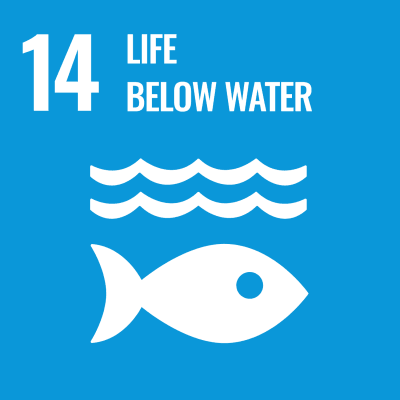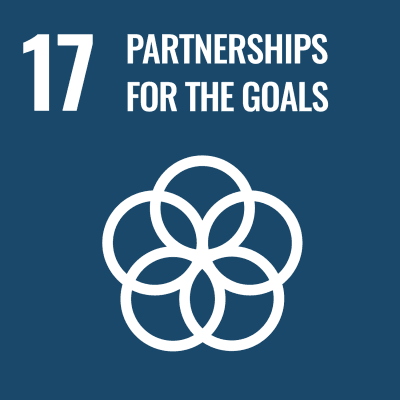-
Faculty of Veterinary Medicine, Department of Veterinary Medicine
- Professor
- Akihiko SUGIYAMA
- Research Field
Experimental Pathology, Veterinary Pathology
- Keyword(s)
Chemical Substance, Toxicity Evaluation, Animal Species, Developmental Stage
- Research theme
-
- Elucidation of histopathological effects of chemical substances on living organism
Outline of research activities
The effcts of chemical substances on living organism depend on animal species and developmental stage. A lot of unexplained subjects exist in these reserch topics. I tackle researches in order to clarify the pathogenesis of lesions induced by chemical substances in various aminal species, such as rat, quail, chicken, medaka and newt in different developmental stages.

- Desired cooperation
-
- Molecular pathological researches on development of toxicity (gene analysis)
-
Faculty of Veterinary Medicine, Department of Veterinary Medicine
- Professor
- Akihisa HATA
- Research Field
Medical technology, Environmental hygiene
- Keyword(s)
Antimicrobial resistance, Enterobacteria, Arsenic, Analytical technique
- Research theme
-
- human and animal clinical testing technologies
- Research on antimicrobial resistance bacteria based on the One Health Concept
- food safety and functionality
Outline of research activities


We not only analyze the health status of humans, animals, the environment, and food, but also develop new testing methods to evaluate them.
In recent years, we have been conducting joint research with local governments and companies to develop processing methods to reduce food loss and add value to food ingredients, to evaluate the pharmacokinetics of functional ingredients in foods, and to develop new testing methods for inflammation markers.- Desired cooperation
-
- blood test
- bacteriological test
- food testing
-
Faculty of Veterinary Medicine, Department of Veterinary Medicine
- Professor
- Akikazu SAKUDO
- Research Field
Food Safety, Virology
- Keyword(s)
Prion, Virus, Disinfection, Sterilization, Gas plasma, Ozone
- Research theme
-
- Non-thermal disinfection technology
- Anti-bacterial and anti-viral reagents and materials
- Novel sterilizers and inactivation mechanisms
Outline of research activities


Novel technologies to efficiently and safely disinfect agricultural products have been studied. We aim to contribute to food safety and security by developing innovative disinfection methods..

In addition, we have studied the effect of disinfectants against a range of pathogens on different materials, including influenza virus and feline calicivirus (a surrogate of human norovirus) as well as prions (most resistant pathogen). We also analyzed the likely mechanism of pathogen inactivation. Given our focus of research, we would like to collaborate with companies to assist in evaluating products as well as developing new technologies.- Desired cooperation
-
- Development of non-thermal technology in the field of food science
- Evaluation of anti-bacterial and anti-viral effects of products
- Product evaluation of sterilizers
-
Faculty of Veterinary Medicine, Department of Veterinary Medicine
- Professor
- Atsushi TAGUCHI
- Research Field
History of English Philology and linguistics, Corpus Linguistics
- Keyword(s)
Prescriptive Grammar, Historical Sociolinguistics, Corpus Linguistics
- Research theme
-
- Prescriptive grammars compiled in the 18th century
- History of English philology and linguistics as history of linguistics
- Surveying the large corpus data of the contemporary English and the application
Outline of research activities(1) I have been studying the prescriptive grammars compiled in the 18th century. I have especially focused on James Buchanan’s works, such as grammar books, dictionaries, and so on, who flourished in the middle of 18th century, in the terms of historical sociolinguistics. One of my main investigating points is that why prescriptive grammars were needed and how grammar books affected the then society and the education in the 18th century. I have also been studying the differences between the usages used by the 18th century authors and the ones in prescriptive grammars, analyzing Buchanan’s grammar books.
(2) I have been studying the contemporary English grammar and usages. Researching the large corpus data of the contemporary English, I have been surveying the differences between the grammar and usages in “school grammar,” that is, prescriptive grammar, and the real ones. The results from the survey have been applied on my teaching English in my classes.- Desired cooperation
-
- Interdisciplinary researches on history of philology and linguistics
- Reconsideration of "school grammar" as priscriptive grammar
- Surveying the large corpus data of the contemporary English and the appication
-
Faculty of Veterinary Medicine, Department of Veterinary Medicine
- Professor
- Fumio HOSHI
- Research Field
Renal urologic endocrine internal medicine of the companion animal
- Keyword(s)
Cat, Biomarker, Chronic kidney disease, Parathyroid
- Research theme
-
- Diagnosis, treatment, management of the early stage chronic kidney disease.
- Prevention of urolithiasis of the companion animals.
- Diagnosis, treatment of the mineral metabolism disorder with the chronic kidney disease.
Outline of research activitiesThe old cat gradually has decreased kidney function, and many cats often die for chronic kidney disease. Therefore, I can extend the expectation of life of the cat by detecting the decrease of the renal function on the earlier stage, and managing it. I focus on urinary a very small amount of protein excreted as a renal function marker of the earlier stage. I am going to establish simple and easy diagnostic procedure in the chronic kidney disease of the earlier stage by creating the recombinant protein of its marker, and making a monoclonal antibody, and establishing of measurement system. Furthermore, Hyperparathyreosis to be complicated for chronic kidney disease causes mineral metabolism abnormality. We find that parathyroid hormone is connected directly with various symptoms to appear for chronic kidney disease. Therefore I establish simple and easy early diagnostic method of hyperparathyreosis and research the method of use of various phosphate binders which are its therapeutic drug.
Also, in recent years calcium oxalate calculosis increases to a companion animal similar to humans. Therefore I research the mechanism that a calcium oxalate calculus is formed by all things (food, supplement etc) to ingest, and I research a method to inhibit the formation of the calcium oxalate calculus.- Desired cooperation
-
- Biomarker determination kit construction
- Parathyroid function control with the phosphate binder
- Calcium oxalate calculi formation inhibition
-
Faculty of Veterinary Medicine, Department of Veterinary Medicine
- Professor
- Hiroshi YOKOYAMA
- Research Field
Fish pathology
- Keyword(s)
Fish parasite, Food hygiene, Winemaking
- Research theme
-
- Biology of fish-parasitic myxozoans and microsporidians
- Control measures of myxozoan and microsporidian diseases
- Diagnosis of fish parasites in seafoods
- Evaluation of administering grape pomace, effluent from winemaking, on immunity in cultured fishes
Outline of research activities



We study on the biological characteristics of fish parasites with the aim of disease control. Also, many fish parasites in seafoods have been subject to complaints by comsumers. However, fish parasites normally live in wild environments, and it is crucial to discriminate between harmful and harmless for humans.
To improve the quality of farmed fishes, we try to feed grape pomace, effluent from winemaking, on the immunity and health condition in cultured fishes.
- Desired cooperation
-
- Control measures of parasitic diseases in fish farms
- Diagnosis of fish parasites in seafoods
- Improvement of cultured fishes by feeding grapa pomace
-
Faculty of Veterinary Medicine, Department of Veterinary Medicine
- Professor
- Masumi ETO
- Research Field
Professor of Veterinary Medicine
- Keyword(s)
Physiology, Biochemistry, Molecular Biology
- Research theme
-
- Smooth muscle, artery, digestive tract, cell signaling, CPI-17
- Establishing veterinary medical engineering field
- Coordinating Himepet, a pet-related industrial cluster
Outline of research activities





Smooth muscle cells are major components of the organ walls of organs, such as artery, gastrointestinal tract, bladder and trachea. Smooth muscle cell motility is highly regulated by nerve and hormonal stimuli. Accumulating lines of evidence suggest that impaired smooth muscle motility is involved in a variety of diseases, such as hypertension, digestive dysfunction, asthma, and dysuria. To elucidate the molecular basis of smooth muscle diseases, and to develop their effective diagnostic and therapeutic strategies, we have been studying the mechanisms that regulate smooth muscle motor function. Meanwhile, we have discovered a protein that regulates smooth muscle contractile function and have elucidated the underlying mechanism by which the protein mediates regulation of smooth muscle motility. We now study the signals in smooth muscle disease.
In parallel with our research on smooth muscle disease, we are assisting in the development of devices and products to improve the quality of life of animals, including pets, and their owners through collaborative research.- Desired cooperation
-
- Translational research in organ failures
- R&D in pet-related devices and products
-
Faculty of Veterinary Medicine, Department of Veterinary Medicine
- Professor
- Risuke MIZUNO
- Research Field
Medical and Biological Engineering, Basic Medical Sciences
- Keyword(s)
Biomechanics, Micro-Lymph Circulation, Hemodynamics
- Research theme
-
- Pathophysiology of salt-sensitive hypertension
- Pathophysiology of sarcopenia and frailty
- Drug-repositioning
Outline of research activitiesIt is generally understood that the microvascular system contains arterioles (afferent and resistant vessels), venules (efferent vessels), and capillaries (exchanger vessels). Now we recognize that microcirculation includes not only the microvascular machinery, but also interstitial space fluid dynamics and the lymphatic system. All of vertebrates have to circulate blood into each tissue-cell through the transport mechanisms to supply nutrients and remove wastes. The microcirculatory system is indeed a main player to regulate body fluid homeostasis, which maintains an internal environment of the body, indicating that macro-circulation (heart and large vasculatures) is a support system to pump blood perfusion. Thus, failure of the microcirculatory system evokes dysfunction of activity and survival in tissues-cells and subsequently determines life and death of creatures and humans. That’s why the microcirculation world has never been micro, but huge, space to integrate each cellular function and life support. We continue challenging to explore ‘bench to bedside research’, that is available for preventation, diagnosis, and treatment of diseases, through understanding heterogeneity and analyses in the regulation of microcirculatory functions among tissues-cells.
- Desired cooperation
-
- Basic and clinical sciences based on micro-lymph circulation
- Translational research (veterinary to medical sciences) in sarcopenia and frailty
- Translational research (veterinary to medical sciences) using NIRS
-
Faculty of Veterinary Medicine, Department of Veterinary Medicine
- Professor
- Ryusei KUWATA
- Research Field
zoonosis, infectious diseases,
- Keyword(s)
zoonosis, wild animal, viruses
- Research theme
-
- Epidemiology for zoonotic diseases
- Transmission mechanisms and molecular biology of zoonotic diseases
- Ecology of wildlife and disease vectors
Outline of research activities




Among infectious diseases caused by pathogenic microorganisms such as viruses and bacteria, we are studying zoonoses, which are infectious diseases between animals and humans. In recent years, with the increasing distance between animals and humans and the improvement of diagnostic techniques for pathogenic microorganisms, it has become clear that a variety of zoonoses exist in the world and pose a significant threat to us and human society. Our research contributes to the prevention and control of these zoonotic diseases by clarifying how these pathogenic microorganisms are actually maintained in the field and the degree of risk they pose to humans and animals. We also conduct molecular biological studies using actual pathogens and various types of cultured cells to evaluate pathogenicity and elucidate the mechanisms of pathogen transmission.

- Desired cooperation
-
- Biotechnology (for vaccine development and diagnosis)
- Pathology
- Reserch on wildlife
-
Faculty of Veterinary Medicine, Department of Veterinary Medicine
- Professor
- Shin-ya SAITO
- Research Field
Vascular Pharmacology
- Keyword(s)
Smooth Muscle, Muscle Contraction, Hepatic Stellate Cell, Cell Motility, Fibrosis
- Research theme
-
- Mechanism of increased contractile response in skin artery under nerve injury
- Control mechanism of hepatic stellate cell contraction
- Control mechanism of smooth muscle contraction
Outline of research activitiesBlood circulates in our body through various size of blood vessels. Since the blood flow rate is regulated by the vessel diameter, the constriction of the vessels affects the activities of organs. Based on this fact, I am investigating two different blood flow regulation. The first is skin blood flow. We are flushed with hot weather, pale in cold weather. Thus, skin blood flow depends on temperature, and this regulation is different from other vessels. Since reduction in blood flow exacerbates pain, I am investigating the relationship between onset of pain and decrease in blood flow. The second is hepatic blood flow. Hepatic stellate cells are attached to capillaries, so-called sinusoids, that form a network in the liver, and hepatic blood flow is thought that regulated by this cell. However, it is not well known that how the hepatic stellate cell regulates the blood flow. My second subject is to clarify this physiology. During hepatic injury, the hepatic stellate cell will be transdifferentiated to collagen producing cell, which exacerbate inflammation, advance liver fibrosis and impair blood flow. Controlling the transdifferentiation is also an important subject for controlling the regulation of hepatic blood flow.
- Desired cooperation
-
- Study of neuropathic pain
- Study of liver fibrosis
-
Faculty of Veterinary Medicine, Department of Veterinary Medicine
- Professor
- Takashi INOUE
- Research Field
Veterinary medicine, Parasitology, Laboratory animal science
- Keyword(s)
Parasites, Laboratory animals, germ-free animals
- Research theme
-
- Control of animal parasitic diseases
- Development of experimental models for host-microbiota- parasite relationship
Outline of research activitiesParasitic diseases caused by protozoa, helminths, and arthropods have long been recognized as threats to the health of humans and animals. “Parasitism” is defined as a symbiotic relationship between different species where one species (the parasite) benefits while the other species (the host) suffers harm. Although “symbiosis,” where both species benefit, is distinguished from parasitism, in reality, the boundary between parasitism and symbiosis is often blurred. In diverse environments, parasites and hosts interact with each other for survival, and they are also influenced by symbiotic microbiota. Parasitic diseases are a part of this interaction. I explore such complex host-parasite relationships to understand the pathogenesis of parasitic diseases.
- Desired cooperation
-
- Survey on parasites in captive and wild animals
- Microbiota analysis of hosts and parasites
- Behavioral analysis of insects and parasites
-
Faculty of Veterinary Medicine, Department of Veterinary Medicine
- Professor
- Taketoshi ASANUMA
- Research Field
Veterinary Radiology, Diagnostic Imaging, Tumor Radiation Therapy
- Keyword(s)
MRI, Diffusion Tensor Imaging, Fibertractography, Hypoxic Cell Radiosensitizers, Radiation Therapy, Thermal Treatment
- Research theme
-
- Veterinary radiotherapy (radiosensitization, hyperthermia combination, anticancer drug combination)
- Diagnostic imaging of a laboratory animal and the veterinary clinic
- The damage by reactive oxygen species
Outline of research activitiesWhen the tumor cells are beyond 42.5 degrees centigrade, the tumor cells become extinct rapidly. The radiofrequency waves gather to the tumor tissue efficiently, and only a tumor can heat. Because only an electromagnetic wave enters from the outside the body, we do not lower the quality of life of the patients. Figure is the abdominal CT image of the dog in which the large tumor rolled up an important blood vessel and widely occupied from abdominal to pelvis cavities. The surgical operation that only this tumor resected was very difficult, and oncothermia treatment (thermal treatment) was performed because owner did not want anticancer drug treatment. The volume of the tumor after about 2 months of oncothermia treatment became small as compared with that of the first day of treatment. Furthermore, the volume of the tumor reduced to about 1/8 after about 8 months of oncothermia treatment. The quality of life of the patient improved, too.
It is known that there is a cytoreductive effect synergistically when the thermal treatment combines with radiotherapy than use alone. My aim put the combination of radiotherapy and oncothermia treatment into practical use in the veterinary clinic.
- Desired cooperation
-
- Veterinary clinical application of radiation, the radiofrequency wave hyperthermia combination therapy
- Veterinary clinical application of the radiotherapy using the hypoxic cell radiosensitizers
- Evaluation of the spinal cord injury using the MRI diffusion tensor imaging
-
Faculty of Veterinary Medicine, Department of Veterinary Medicine
- Professor
- Takuya MURATA
- Research Field
Reproductive Physiology, Endocrinology
- Keyword(s)
Estrogen, Estrous Cycle, Vitamin D receptor, Oxytocin receptor
- Research theme
-
- Regulatory mechanisms of oxytocin receptor expression
- Effects of vitamin D on reproductive function
- Regulatory mechanisms of pituitary hormone expression
Outline of research activities
Most female mammals have an estrous cycle in which they ovulate periodically. During the estrous cycle, ovarian follicles develop and blood levels of estrogen secreted by the developing follicles increase. This increased estrogen induces ovulation, promotes the proliferation of the endometrium to prepare for implantation of a fertilized egg, and induces sexual behavior by acting on the central nervous system. In addition, estrogen is known to have a wide range of effects, including effects on bone formation, central effects such as memory, and effects on the cardiovascular systems. This means that a wide range of cells are affected by estrogen, and these effects fluctuate during the estrous cycle. In our laboratory, we are investigating the factors and functions affected by estrogen during the estrous cycle, especially in tissues related to reproductive functions such as the pituitary gland and uterus. Oxytocin is a hormone secreted by the posterior pituitary gland and is involved in milk secretion and uterine contractions. Recently, its central effects, such as the ability to trust others more easily, have been attracting attention. Vitamin D is considered to be a hormone and is known to have many actions, just like estrogen. We are currently investigating the regulatory mechanisms of oxytocin receptor and vitamin D receptor expressions, which are involved in the expression of these hormones’ actions.
- Desired cooperation
-
- Studies on the reproductive physiology of female mammals
- Research on diseases specific to female mammals
-
Faculty of Veterinary Medicine, Department of Veterinary Medicine
- Professor
- Tei-ichi NISHIKI
- Research Field
Neuroscience, Neurophysiology
- Keyword(s)
Calsium Ion, Synaptic Vesicle, Exocytosis, Synaptic Transmission, Neurotransmitter Release
- Research theme
-
- Molecular mechanisms of neurotransmitter release
- Podocyte glutamatergic signaling in renal glomerular function
Outline of research activities
Our research group is interested in molecular mechanisms underlying neurotransmitter release from nerve cells. In the brain, nervous system function is founded on the transmission of information from one nerve cell to another at a unique and highly specialized structure, synapse. This information transfer at the synapse is mediated by chemical messengers called neurotransmitters, which are stored in small organelles called synaptic vesicles and exocytosed by fusion of synaptic vesicles with plasma membrane. To explore how neurons release transmitters, we combine molecular biological and electrophysiological techniques, especially focusing on protein-protein interactions. We are now trying to examine how the calcium signaling is converted into neurotransmitter release.
- Desired cooperation
-
- Neurotoxin research
- Podocyte research in renal glomerular function
-
Faculty of Veterinary Medicine, Department of Veterinary Medicine
- Professor
- Teppei KANDA
- Research Field
Veterinary Anesthesiology, Veterinary Nursing
- Keyword(s)
Veterinary anesthesia and analgesia, α2-adrenergic receptor agonists, Veterinary perianesthesia nursing
- Research theme
-
- Veterinary anesthesia and pain management
- α2-adrenergic receptor and its agonists
- Application of ICT technology in veterinary medicine
Outline of research activitiesIn order to realize more safe and more comfortable anesthesia for animals, we are working on research focusing on veterinary anaethesiology and veterinary perianesthesia nursing. In particular, we are actively pursuing studies on α2-adrenergic receptor agonists, which are often used for sedation and analgesia in veterinary medicine. So far we have published the paper regarding the influence of α2-adrenergic receptor agonists on tear production, intraocular pressure, and pupil size, the application to total intravenous anesthesia, and the sedative or anti-anxiety effects by ophthalmic adminstration.
In addition, we are conducting research in cooperation with veterinary nurses about the practice of veterinary perianesthesia nursing such as temperature management under anesthesia and management of anxiety before/after anesthesia.
- Desired cooperation
-
- Pharmacological analytics for Total intravenous anesthesia research
- Histlogical, molecular biological and cell biological knowledge and technology to detect the Alpha2-adrenoceptor and analyse its function
- ICT technology targeting veterinary medicine
-
Faculty of Veterinary Medicine, Department of Veterinary Medicine
- Professor
- Tohru FUKASE
- Research Field
Epidemiology, Parasitology, Animal Pharmaceutical Science
- Keyword(s)
Infectious Disease, Parasite, Drugs for Animals, Preventive Veterinary Medicine, Pharmacoepidemiology
- Research theme
-
- Epidemiological research on infectious diseases of animals
- Treatment and prevention of parasite infections in animals
- Efficacy and side effets of drugs for animals, etc.
Outline of research activities


I am working for epidemiological research on infectious diseases in animals, especially dirofilariasis and ectoparasite infections in dogs and cats, to aim at contribution to prevention. Furthermore, I am working for development of new drugs for animals. And I am also expanding the appropriate use of drugs in animals through pharmacoepidemiological research on usage survey, re-examination of efficacy and incidence of side effects of already-existing drugs.
 Photos are a cat flea and a tick. Cat fleas are mundanely detected on dogs as well as cats, and also on humans in recent years in Japan. Ticks have gotten a lot of attention recently as vectors of severe fever with thrombocytopenia syndrome (SFTS). I am working for development of ectoparasiticides.
Photos are a cat flea and a tick. Cat fleas are mundanely detected on dogs as well as cats, and also on humans in recent years in Japan. Ticks have gotten a lot of attention recently as vectors of severe fever with thrombocytopenia syndrome (SFTS). I am working for development of ectoparasiticides.- Desired cooperation
-
- Epidemiological survey of various diseases of animals
- Research on parasite infections in animals
- Usage survey of drugs in animals, etc.
-
Faculty of Veterinary Medicine, Department of Veterinary Medicine
- Professor
- Toshiyasu MATSUI
- Research Field
Neuroanatomy, Veterinary Anatomy
- Keyword(s)
Nervous System, Olfaction, Neuroanatomical Tracing, Cholinergic Neuron
- Research theme
-
- Neuronal connections of the reticular formation
- Morphology of cholinergic interneurons
- Comparative anatomy of the amphibian olfactory system
Outline of research activities

Mastication and swallowing are patterned movements that are essential for the vital activities of animals including humans. These movements require coordinated activity of orofacial muscles, and interneurons in the brainstem control the activity of motor neurons in the orofacial motor system. Among brainstem interneurons, we are focusing on cholinergic interneurons and studying their cell morphology, neural circuits, and neurotransmission. By elucidating the neural circuits between interneurons and motor neurons, we aim to gain knowledge that will lead to an understanding of orofacial movement disorders.
We are also studying the histology of the olfactory organ and its center, the olfactory bulb, of urodele amphibians. By comparing the olfactory system between urodelan species, we are investigating the relationship between the adaptation to water and land environments and the olfactory evolution.

- Desired cooperation
-
- Histological analysis of animal tissues
- Evaluation and development of medical devices using animal anatomy
-
Faculty of Veterinary Medicine, Department of Veterinary Medicine
- Professor
- Toshiyuki SHIBAHARA
- Research Field
Parasitology, Medical Zoology, Laboratory Animal Science and Technology
- Keyword(s)
Helminthic Zoonoses, Trematoda, Paragonimus, Laboratory Animals
- Research theme
-
- Investigation into actual conditions of parasite infection in some animals.
- Taxonomy, ecology and epidemiology of trematoda, with special refference to Paragonimus.
- Survey on low pathogenic parasite and protozoa in laboratory small animals.
Outline of research activitiesThe trematode, Paragonimus westermani is distributed widely throughout the Asia, and has been well-known as one of the important causative agents of helminthic zoonoses, I have been strongly interested in its taxonomy ,ecology and epidemiology and am conducting research work through a steady fieldwork. Especially in recent years, many peaple’s eyes are forcusing on the wild boar’s meat as a “gibier” in order to promote the development of local area. However, many juvenile worms of P. westermani sometimes harbor in the meat through ingesting the second intermediate host, the fresh water crab. Therefore, special attention must be paid to cook and/or preserve the meat. From the parasitological view point, I would like to play a part in risk management of game meats. Besides, I have been guiding the staffs of the national/private university’s laboratory animal facilities at their requests in the extermination of mouse/rat host-specific pinworms and/or protozoa, of which infections are of frequent occurence and do damage to experiment.

- Desired cooperation
-
- Cooperative research work on the taxonomy, ecology and epidemiology of trematoda.
- Consultancy on risk management of game meat.
- Consultancy on the extermination of rodents such as mouse and/or rat specific pinworms and/or protozoa.
-
Faculty of Veterinary Medicine, Department of Veterinary Medicine
- Professor
- Yasuhiko OKAMURA
- Research Field
Comparative oncology, Small animalsurgery
- Keyword(s)
Reconstructive surgery, Tumor marker, Chemotherapy
- Research theme
-
- Reconstructive surgery for bone tumors
- Study of the availability of a new tumor marker
- Study of the anti-tumor effects of xanthine derivatives
Outline of research activitiesOne out of two Japanese will be suffering malignant tumor in their lifetime, there to not be an exaggeration to say that national disease. Dogs and cats as well as humans suffer from malignant tumor. I am conducting research with the goal of applying it to the treatment of human malignancies as well as animal malignancies by treating and researching naturally occurring malignancies in animals.
- Desired cooperation
-
- Comparative oncology
-
Faculty of Veterinary Medicine, Department of Veterinary Medicine
- Professor
- Yasuhiro KAMBAYASHI
- Research Field
Preventive Medicine, Environmental Health, Oxidative Stress , Epidemiology
- Keyword(s)
Chemicals, Ambient Dust, Allergy, Oxidative Stress, Earthquake, Psychchiatric Effect
- Research theme
-
- Involvement of oxidative stress in exacerbation of bronchial asthma by polycyclic aromatic hydrocarbons
- Psychiatric effects of earthquake on the elderliy
- Relationship between parabens contained in household goods and allergic diseases
Outline of research activities
The health effects of transboundary pollution such as Asian dust and fine particulate matter (PM2.5) have become a public health problem. We have focused on its constituents such as polycyclic aromatic hydrocarbons (PAHs). We are also conducting research on the involvement of oxidative stress in exacerbation of symptoms of bronchial asthma caused by PAH using cultured cells.
The eldery are reported to be more susceptible to the psychiatric effects of earthquake. We are analyzing epidemiological surveys data on the psychiatrioc effects of the Noto Peninsula Earthquake (2007) on the elderly who lived in temporary housing or in areas where damage was severe.
We are investigating the relationship between parabens, which are contained as antibacterial agents in household goods such as shampoos and cosmetics, and allergic diseases. We reported on the association of parabens and allergic disease in population over 40 years of age and in infants. I am participating in a cohort study (lifestyle and health, etc.) that has been ongoing for more than 10 years in Noto, including this study.- Desired cooperation
-
- Research on oxidative stress (especially lipid oxidation) and diseases
- Research on environmental chemicals and allergic diseases
- Epidemiological study








